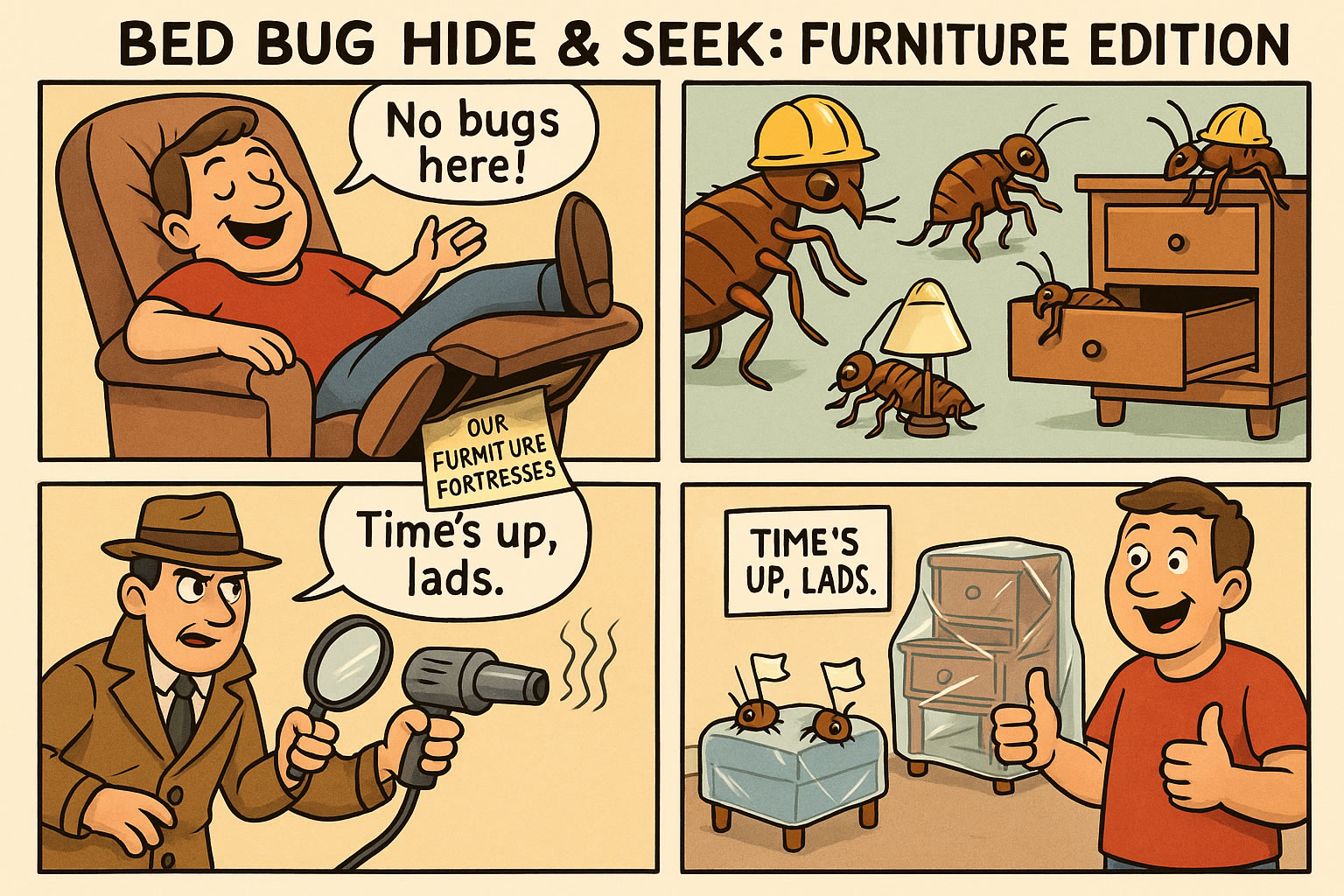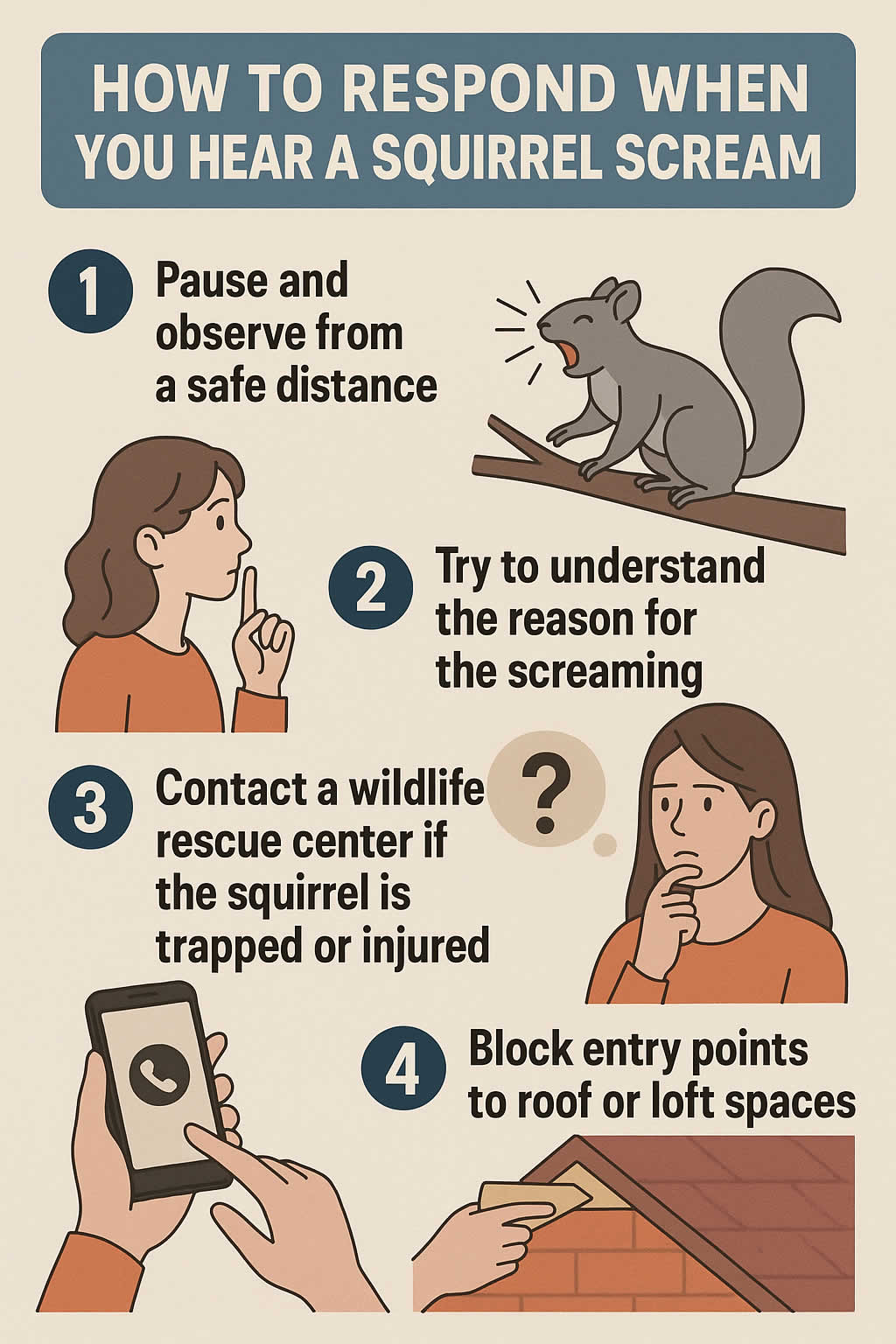Related Queries
ToggleDealing with a bed bug infestation is stressful enough. But when you realise they’ve made their way into your furniture — not just your bed — things can quickly start to feel overwhelming. Your sofa, your armchair, even wooden pieces like drawers or bedside tables might suddenly feel off-limits. You wonder if you’ll have to throw everything out or whether there’s a safe way to treat it all.
This guide is going to help you take control of the situation. You’ll learn how bed bugs get into furniture, how to spot them, and — most importantly — how to get rid of bed bugs properly. We’ll also go over what works, what doesn’t, and how to prevent the problem from coming back again.
How do bed bugs get into furniture?
Bed bugs are excellent at hiding. They don’t fly or jump, but they crawl quickly and squeeze into tight spaces. Once they find a warm, quiet place close to where people rest or sleep, they settle in and start multiplying.
So if you’ve got an infested mattress or bed frame, and you also have furniture nearby — like a bedside table, upholstered chair, or wardrobe — it’s not a big leap for bed bugs to start spreading. They might tuck themselves into seams, under fabric, behind drawer joints, or even inside hollow wooden legs.
In some cases, second-hand furniture brings them into your home. That lovely armchair from a charity shop or a “too-good-to-miss” Facebook Marketplace find might carry bed bugs without you even knowing.
They can also move between flats or rooms through shared walls, floors, or soft furnishings.
What types of furniture do bed bugs infest?
They’ll hide in almost any piece of furniture that gives them:
- Darkness
- Protection
- Close proximity to humans
They especially like anything fabric-covered or soft. So, you might find them in:
- Sofas
- Armchairs
- Cushions
- Headboards
- Recliners
But wooden furniture isn’t safe either. Bed bugs can crawl into:
- Drawers
- Cupboards
- Shelving units
- Underneath coffee tables
- Inside screw holes or gaps in joints
Even metal frames aren’t immune. If there’s any spot with a small crack or crease, they can nest in it.
How can you tell if your furniture has bed bugs?
The signs can be subtle at first, especially if the infestation is new. But there are things to look for.
Start by checking any seams, tufts, or stitching on fabric furniture. Use a torch and a magnifying glass if you have one. You’re looking for:
- Small black dots (bed bug faeces)
- Tiny white eggs or pale shed skins
- Blood spots or stains
- Live bugs (reddish-brown, flat, about 5–7mm long)
On wooden furniture, check:
- Underneath drawers
- Along joints or edges
- In screw holes
- Behind the backboard
You might also notice a musty or sweet smell, which gets stronger in heavier infestations.
If you’re waking up with bites and can’t find anything on your bed, it’s likely they’ve spread to nearby furniture.
Can you treat infested furniture, or do you have to throw it away?
You can usually treat it — but it depends on how bad the infestation is and what the item’s made of.
For solid wood or metal furniture, you’ve got a much better chance of saving it. These materials don’t absorb chemicals, and heat treatments can reach the cracks where bugs hide.
With fabric-covered furniture, it’s a bit trickier. If the infestation is light and caught early, you may be able to treat it effectively. But if the bugs have made their way deep into the padding or structure, getting rid of them completely can be extremely difficult.
You don’t always need to throw it away — but if you do, don’t give it to someone else, and don’t just leave it on the pavement without marking it clearly as infested.
How to treat bed bugs in upholstered furniture
If you’re dealing with sofas, chairs, or padded headboards, follow this process:
- Vacuum thoroughly
Use a strong vacuum with a hose attachment. Go over every seam, fold, and edge. Don’t forget under cushions, behind the frame, and underneath the item. Empty the vacuum immediately afterwards into a sealed bag and take it outside.
- Use steam
A steamer with a high-heat output (at least 120°C) is one of the most effective non-chemical treatments. Slowly move it along the surface of the fabric, seams, and corners. The heat kills bed bugs and eggs on contact. Be cautious not to soak the material too much.
- Apply safe insecticides
Use only those clearly labelled for indoor furniture use and safe around pets and people. Avoid saturating the fabric — apply to seams and crevices. Always follow the product’s safety instructions carefully and leave time to ventilate the room after use.
- Encase cushions if possible
You can buy zippered bed bug-proof encasements that work for some sofa cushions. These trap bed bugs inside and prevent new ones from getting in.
If you can’t treat or encase parts of the furniture, consider replacing removable sections like pillows or padding.
How to treat bed bugs in wooden furniture
Wooden pieces can usually be saved with a bit more effort:
- Disassemble where possible
Take out drawers, remove shelves, and unscrew any panels if it’s safe to do so. This helps expose hiding spots.
- Vacuum and scrub
Use a stiff brush to scrub joints, cracks, and holes. This loosens any eggs or debris. Follow up with a thorough vacuum.
- Apply a residual insecticide
Choose one that’s safe for indoor use on hard surfaces. Use a narrow nozzle or paintbrush to reach into gaps and cracks.
You can also seal visible gaps with wood filler or silicone once the treatment has dried — this prevents bugs from getting back in later.
- Repeat as needed
One round of treatment is rarely enough. Repeat the process weekly for a few weeks, or follow the treatment instructions carefully for duration and reapplication.
Should you use foggers or sprays?
Foggers, also called bed bug bombs, aren’t very effective for treating furniture. They tend to send the bugs deeper into cracks or into other parts of the home. Most professionals don’t recommend them unless they’re part of a broader strategy.
Sprays can help — but they need to be targeted. Bed bugs are great at hiding. Spraying a visible surface won’t do much unless you’re getting right into where they’re nesting.
How do professionals treat infested furniture?
If the infestation is serious or keeps coming back, professional pest control is your best bet. They have access to stronger chemicals and techniques, including:
- Heat treatments, which raise the whole room’s temperature to lethal levels for bed bugs
- Insect growth regulators, which stop the bugs from maturing or reproducing
- Spot treatments with specialist tools to reach deep into furniture
They’ll also inspect more thoroughly, helping you identify hidden areas you might not think to check.
Let them know what you want to keep, and they’ll tailor the treatment to make sure it’s safe to do so.
Can you treat furniture without harming pets or children?
Yes, but you need to be careful.
Choose products that are clearly marked as pet-safe or non-toxic once dry. Keep pets and children out of the room during treatment and while surfaces are still wet. Wash anything removable, like covers or cushions, separately on a hot cycle.
Steam is a safe option and works well in homes with children or animals.
If you’re unsure about a product, ask your vet or GP for advice — or use a professional service that specialises in family-safe pest control.
Can you prevent bed bugs from coming back?
Once you’ve dealt with an infestation, it’s important to protect your home from another one. Here’s how:
- Inspect second-hand furniture thoroughly before bringing it inside
- Use protective encasements on mattresses and cushions
- Vacuum regularly, especially around soft furnishings
- Keep beds and sofas away from the walls, if possible
- Check for signs of bugs after travel or visitors
- Fix cracks in wooden furniture, walls, or skirting boards
If you live in a flat or shared building, talk to your neighbours or landlord — bed bugs can move between units.
Related Questions
Can bed bugs live inside a leather sofa?
Yes, but they’ll hide in the seams, underneath cushions, or in the frame — not the leather itself.
How long can bed bugs survive in furniture?
They can live for several months without feeding, especially in cooler temperatures. So even empty furniture can stay infested for a long time.
Do bed bugs only live in beds?
No — they’ll hide anywhere close to where people sleep or rest, including chairs, sofas, and bedside tables.
Is it worth saving infested furniture?
If it’s in good condition and the infestation isn’t severe, it’s often worth treating. But if the bugs are deep inside or the item can’t be treated safely, disposal might be the better choice.
How do I safely dispose of infested furniture?
Wrap it in plastic or mark it clearly as infested. Don’t donate or resell it. Some councils offer bulk waste collection — check your local services.
Final thoughts
Treating bed bugs in furniture takes patience and a bit of planning — but it’s completely doable. You don’t always need to throw things away. With the right approach, you can remove the bugs, clean your space, and hold onto your favourite pieces safely.
Just stay consistent. Keep an eye on the situation for a few weeks. And if things don’t improve, don’t hesitate to call a professional.
Pest Control Curthwaite – Pest Control Caldbeck – Pest Control Henlow Camp













